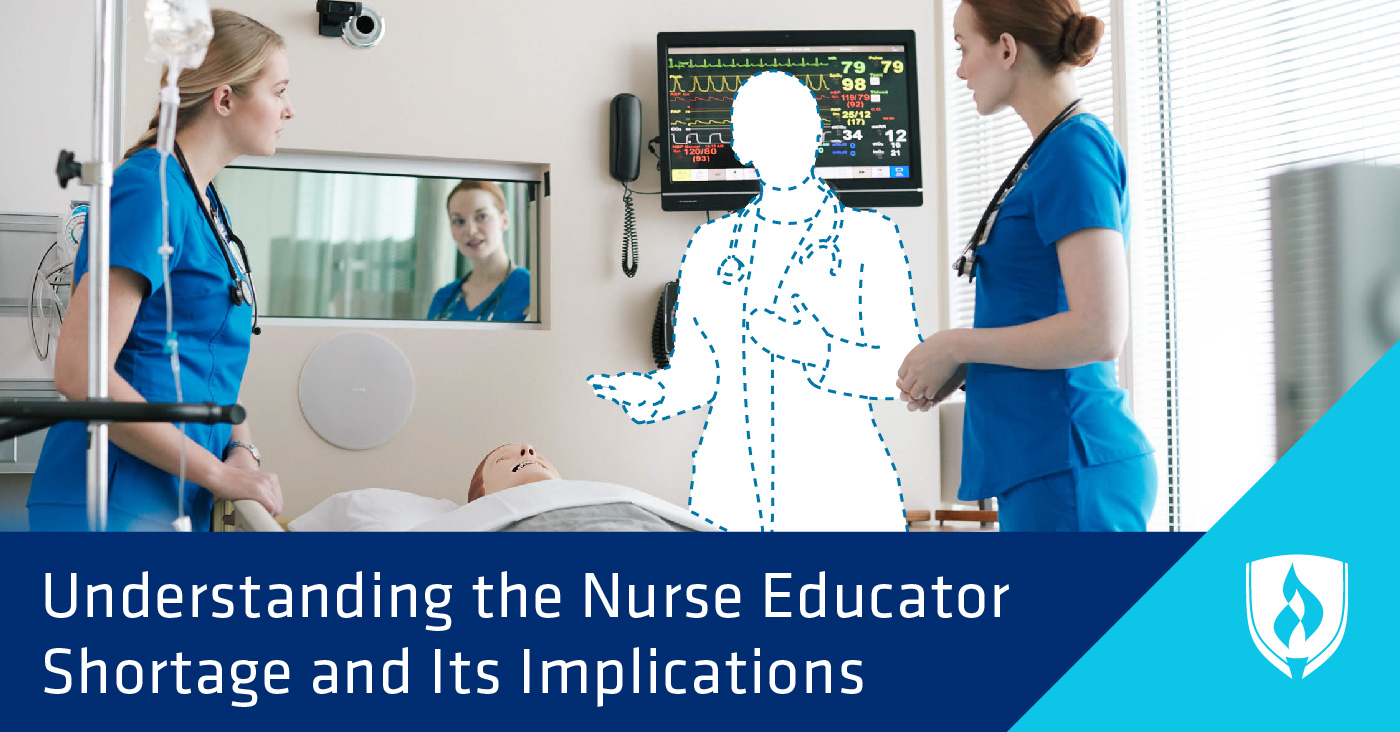
Remember when you went through nursing school? At first, your instructors seemed intimidating, keeping a critical eye on everything you did. But when you got to know them, things changed. One was peppy and had the energy of someone with an IV full of coffee. Another was serious and seemed to have eyes in the back of their head—which must have helped with the whole “seeming like they’ve seen it all before” thing they had going on.
You might have been scared of them in the beginning, but they helped you become the nurse you are today. You learned so much about how to be successful as a nurse from them. But you might be surprised to find out this role has become strained as the industry tries to keep up with the need for newly trained nurses. A lot of people talk about what’s wrong with the healthcare system, but you know better than anyone that without nurse educators, the system can’t function. Find out why educators are in short supply and what’s being done to bring them back.
What is the nurse educator shortage?
You’ve probably heard of the nursing shortage. And there’s a good chance you’ve probably experienced the effects of it yourself—too many patients, not enough hands. While an approximate 1.1 million nurses are needed to avoid a shortfall, those newly trained nurses also need an influx of nursing educators to help fill this gap.1
According to the American Association of Colleges of Nursing (AACN), just over 75,000 qualified applicants were turned away from nursing programs in 2018 due in large part to an insufficient number of faculty.2 That’s 75,000 potential nurses who could have potentially served hundreds of thousands more patients.
Without adequate nursing staff, clinical units are overworked and often face burnout. Patient care is adversely affected, and the entire healthcare system faces a negative ripple effect.
A recent AACN survey of 872 nursing schools found 1,715 empty nurse educator positions with more waiting to be created.3 If each of those positions were filled and trained just twenty-five students, we would be over 40,000 nurses closer to ending the nursing shortage.
In order to solve understaffing, increase the quality of patient care and help heal the healthcare system in America, we need to focus on where it all begins—the educator.
What causes the nurse educator shortage?
Just like the nursing shortage, nurse educators are affected by a large aging population. As the baby boomer generation retires, many are leaving careers in healthcare and now relying more on its services. In other words, we need more nurse educators than ever, but a lot of them are retiring all at once.
If it were as simple as buying a more teacher-like pair of glasses, more nurses would step in to fill the gap. But in order to become a nurse educator, you’re likely going to need at least a Master of Science in Nursing (MSN). For many, a traditional classroom schedule can be challenging to manage while also working as an RN, which can be a barrier for some who are interested in these positions.
Perhaps most crucial, however, is simply a lack of recognition that nursing education is a career choice. Nurses are known for their selfless compassion, but they are not naïve. Without evidence of the benefits of this professional path, it’s difficult for education to draw candidates from higher-paying master's degree positions in nursing.
To attract more nurses to education, we need to examine just what makes it attractive.
How can we solve the nurse educator shortage?
Healthcare leaders can make the career path more visible, encourage more nurses to pursue it, and make the process as accessible as possible, but ultimately this shortage will be solved one nurse at a time—one nurse deciding to fill the shoes of someone they once learned from. We can’t manufacture nurse educators, but we can give them a reason to pursue change. Here are some of those reasons.
- A more “standard” schedule. If you’re tired of the 12-hour shifts, teaching could allow you to do the work you love on a schedule you can appreciate.
- Less time on your feet. Nursing is a very strenuous job. As a nurse educator, you don’t need compression socks to make a difference.
- Scholarships and loan forgiveness. Because this shortage affects everyone, government agencies, private businesses and charities have all stepped forward to offer generous financial incentives for those willing to commit to teaching.
- Opportunities to specialize. There are as many opportunities to specialize in education as there are in nursing. If you want to teach geriatric or psychiatric nursing, this is your chance to hone those skills.
- Opportunities to customize. Just in case you aren’t ready to give up direct patient care yet, you can choose to teach part-time, online or even in a teaching hospital.
- Opportunities to research. As an educator, you are on the cutting edge of healthcare. Not only will you learn more about improving care in your master’s program, but you may also have the chance to pursue research in an area of care you're passionate about.
- High demand. Because of the shortage, nursing faculty can enjoy high job demand and security.
- Impact the next generation of nurses. Educators train hundreds of nurses who then serve thousands of patients. You could help train those who will end the nursing shortage.
Play a role in reversing the nurse educator shortage
It takes a nurse to make a nurse. If you learned anything from your time in nursing school, you know how important it is to have good teachers. Multiply your skills by investing in the future of nursing.
For a flexible and affordable program, check out the Rasmussen College Master of Science in Nursing and discover the next chapter in your career.
1American Nursing Association, Practice & Advocacy, Nursing Workforce [accessed January, 2020] https://www.nursingworld.org/practice-policy/workforce/
2American Association of Colleges of Nursing, Nursing Faculty Shortage [accessed January, 2020] https://www.aacnnursing.org/news-information/fact-sheets/nursing-faculty-shortage
3American Association of Colleges of Nursing, Special Survey on Vacant Faculty Positions for Academic Year 2018-2019, [accessed January, 2020] https://www.aacnnursing.org/Portals/42/News/Surveys-Data/Vacancy18.pdf
4Bureau of Labor Statistics, U.S. Department of Labor, Occupational Employment Statistics, [accessed January, 2020] www.bls.gov/ooh/.




